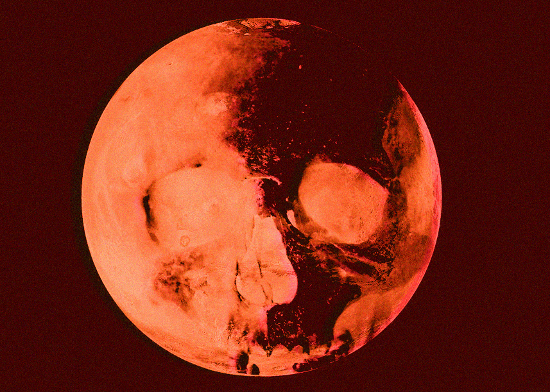In the science fiction television series, The Expanse featured recently on Amazon Prime, humanity spreads out across the Solar System adapting to living on spaceships, Mars, the Asteroid Belt, and the moons of the outer planets. Based on books written by James S. A. Corey, this vision of our species shows it adapted to these various environments. A Martian visiting Earth must train in simulated conditions before being exposed to the gravity well of our planet. Those coming from the Asteroid Belt and the outer moons are similarly burdened by the changes that have happened to them as humans born and raised elsewhere. What Corey is describing is the evolution of our species when exposed to new environments.
In 2018, I proposed that the best way for humans to adapt to Mars was to become Martians. I had read a study that said radiation and the lack of a magnetic field on Mars would doom any human settlement making it unlikely that a baby conceived on the Red Planet would survive.
What I proposed, therefore, was that we could solve this survival issue in two ways. First, we could put human colonies on Mars underground to avoid the radiation and harsh environment of the planet’s surface. Or second, we could create future Martian colonists preprogrammed genetically to survive on the Martian surface.
In other words, we would create a new version of humanity adaptable to Mars. The same could be done for any other planned settlement in our Solar System or beyond. We would develop humans engineered to withstand solar flares, cosmic radiation, low gravity, and extremes of heat and cold.
My Martian hypothesis came from me theorizing that this might be the way for humanity to survive a changing Earth because of climate change. In other words, if we couldn’t stop the greenhouse effect of fossil fuel emissions, we could re-engineer the human genome to adapt to the changing environment.
In a recent edition of the magazine, Astronomy, Joshua Rapp Learn writes about the ongoing work of Scott Solomon, an evolutionary biologist at Rice University, in Houston, Texas. Solomon has written a book entitled, Future Humans, Inside the Science of Our Continuing Evolution. In it, he hypothesizes an evolutionary outcome for humanity colonizing Mars and how the isolated Martian community would be influenced by environmental conditions to evolve significant genetic mutations. He cites the fact that the evidence of Earth’s history where animal and plant populations that are isolated for periods in new environments acquire rapid genomic changes. Solomon proposes that the same would happen to human populations on Mars, not in thousands but hundreds of years.
Humans have been doing this naturally for a long time. We can see it in the pattern of isolated human populations developing new traits. It explains why people in the polar regions of Europe during the Ice Age lost pigmentation. It explains how different people living in high-altitude environments separated from each other such as those in the Andes Mountains, the Tibetan Plateau, or the Ethiopian Highlands have each developed new genetic traits that allow them to adapt to breathing oxygen-thin air.
The key to Solomon’s Martian hypothesis is humans being born on Mars because that would spur the mutation process. The more children born on the Red Planet the faster the mutation rate would become because there would be more genetic material with which to work.
Solomon goes on to speculate that Martians could appear physically different from Earthlings because of gravity and atmospheric differences. The most obvious genetic change could be height. Human Martians would inhabit a planet with a gravity three-eighths of Earth. So they likely might be taller. Or then again, the Martian environment could turn out smaller humans because their bone structures in low gravity would become weaker. (That’s what has been observed with astronauts onboard the International Space Station during long-duration stays in microgravity.) Martian humans might develop changes to their skin that deal with higher doses of radiation, even evolving cancer-resistant genes. Or our future Martians could be re-engineered using tools like CRISPR right here on Earth before they leave or after arriving on Mars to turn them into a new species.
















